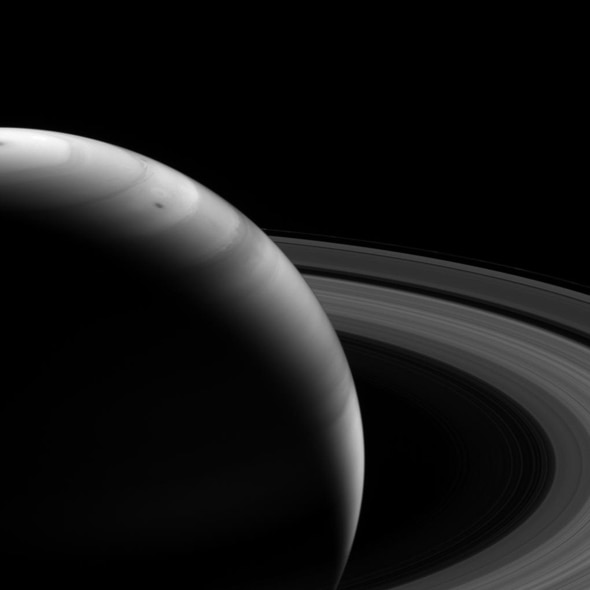Create a free profile to get unlimited access to exclusive videos, sweepstakes, and more!
Saturn Is Gassy, Self-Absorbed

Oh, what is it about infrared images of Saturn? Is it the softness of the appearance, the increased contrast in its cloud tops? Or is it just the subject matter itself, with the addition of seeing it look subtly different?
Itâs all of the above. Duh.
The image above shows the ringed planet on Aug. 12, 2013, when the Cassini spacecraft was 1.54 million kilometers (960,000 miles) from the planet. The orbit of Cassini changes all the time as it swings by the moons of Saturn, so we get different views from the probe, different angles on the planet. In this case it was about 18 degrees above (north of) the plane of the rings, looking down on their sunlit side. The Sun is well off to the upper right, so we see Saturn as a thin crescent.
Cassiniâs cameras have some filters that only let through infrared light, which is invisible to our eyes. Molecules of methane absorb different wavelengths of infrared, so where you see dark spots in the above infrared image the methane is thick, blocking light from below. The brighter regions are where youâre seeing less methane, and light from lower cloud layers can get through to space. The filter used here (centered at 7.28 microns, just outside what our eyes see) lets through light only moderately absorbed by methane. I was able to find the raw image in the Cassini archive, which then allowed me to get an image taken nearly at the same time using the 8.89 micron filter, where methane is strongly absorbed:
You can see the same features, but the contrast is even more striking in the image because the methane in Saturnâs atmosphere is blocking even more of the light coming from below; we only see higher-altitude clouds. You canât compare the two images too much; the second one has not been properly processed to remove camera artifacts (like bright pixels, dead pixels, and so on), but itâs fun to look at both and see what looks the same, what looks different. The rings look brighter in the second image, but that may be due in part to the planet being darker; the exposure time might be longer to compensate, for example.
Images like this are beautiful, to be sure, but they have a very important scientific value: They show how much methane is in the atmosphere, for one. For another, because they are in the infrared, they show temperature variations in Saturnâs atmosphere as well, which tells scientists a lot about how the gases and layers in the planetâs upper atmosphere are behaving.
Looking at pictures like this, itâs easy to forget just how important they are. Weâre seeing Saturn as a world, investigating it to see how it ticks. This in turn gives us a greater understanding of how planets work, including our own. And since Saturn changes on a timescale of hours, these images are a slice of history that weâll never see again. The Universe is a very dynamic place, ever-changing, and if we donât keep our eyes open, looking at it as much as possible, weâre likely to miss something.
As usual, if there is a metaphor for life in there, you are welcome to plumb its depths on your own.














